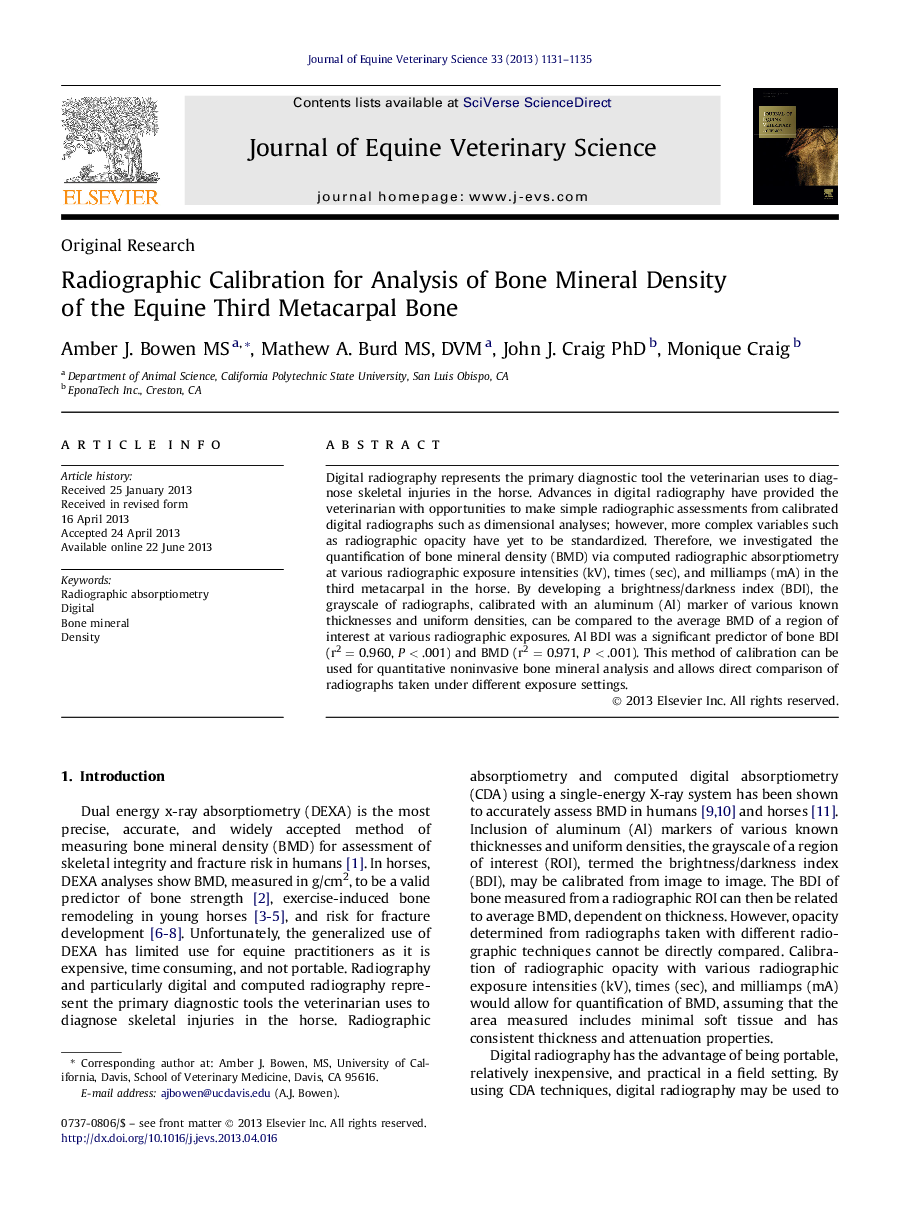| Article ID | Journal | Published Year | Pages | File Type |
|---|---|---|---|---|
| 10961215 | Journal of Equine Veterinary Science | 2013 | 5 Pages |
Abstract
Digital radiography represents the primary diagnostic tool the veterinarian uses to diagnose skeletal injuries in the horse. Advances in digital radiography have provided the veterinarian with opportunities to make simple radiographic assessments from calibrated digital radiographs such as dimensional analyses; however, more complex variables such as radiographic opacity have yet to be standardized. Therefore, we investigated the quantification of bone mineral density (BMD) via computed radiographic absorptiometry at various radiographic exposure intensities (kV), times (sec), and milliamps (mA) in the third metacarpal in the horse. By developing a brightness/darkness index (BDI), the grayscale of radiographs, calibrated with an aluminum (Al) marker of various known thicknesses and uniform densities, can be compared to the average BMD of a region of interest at various radiographic exposures. Al BDI was a significant predictor of bone BDI (r2 = 0.960, P < .001) and BMD (r2 = 0.971, P < .001). This method of calibration can be used for quantitative noninvasive bone mineral analysis and allows direct comparison of radiographs taken under different exposure settings.
Related Topics
Life Sciences
Agricultural and Biological Sciences
Animal Science and Zoology
Authors
Amber J. MS, Mathew A. MS, DVM, John J. PhD, Monique Craig,
